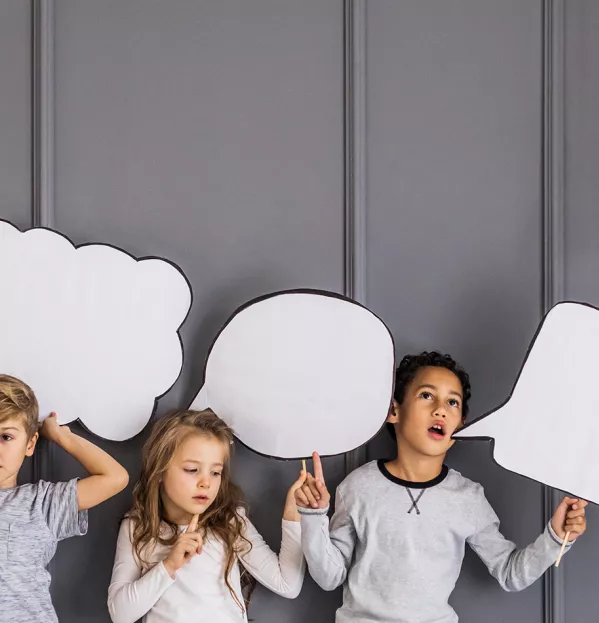- Home
- Teaching & Learning
- Early Years
- 3 ways to support early language acquisition
3 ways to support early language acquisition

In 16 years of primary teaching, I haven’t taught a lesson in which children haven’t needed to understand and use language.
It’s worrying, then, that the latest Early Years Foundation Stage Profile report says that around one in five children aren’t achieving the expected level of development in communication and language.
Language is the bedrock of the EYFS, and while some children will need specialist speech and language support, there are ways we can help all pupils to succeed here.
Tips to help language development in EYFS
1. Focus on the key language needed
Identifying, in advance, the key vocabulary needed for understanding in each unit is a great start, and the “word aware” approach is a good way to do this. Here vocabulary is split into three sections: “anchor” words that children should already know, “goldilocks” words that are unfamiliar but not too difficult, and “step on” words that are tricky and used to extend learning.
Throughout each topic, these three groups of vocabulary are taught explicitly. When children are struggling with a particular word, more time is spent exploring and using it with an adult. Those who struggle with language or working memory have interventions with a teaching assistant as needed.
A “word-aware bucket” extends this approach further: when a topic ends, the vocabulary is collected on slips and put in the bucket. Words are pulled out throughout the year, so children can revise meaning and context, which then supports them when they meet these words again.
2. Make use of visual aids
A visual timetable can provide reassurance to children who don’t follow all of the language being used in class. This should be referred to and updated in each lesson by removing the relevant image after each lesson or activity is completed. A whole-class “task board” can also help here: you can tailor it to your class; for example, by including pictures of children to show which adult they’re with, or a visual list of which equipment they need to find.
“Zones of regulation” boards, meanwhile, can help to build a common language around emotions. Children can complete a visual “check in” in the morning, and move their name to a red, amber or green zone. Anyone who is feeling “red” can be given some time with an adult to talk about how they might move back to “green”. To model the idea that everyone can feel dysregulated at times, staff can also take part.
3. Reach out to parents
Parents have the most significant impact on children’s use of language. Simple things like sending home a list of key vocabulary at the start of a unit can really help to engage them.
Inviting parents into school is especially powerful. This is tricky: lots of parents work or have younger children at home, but varying session times and giving plenty of notice will help with this. Repurposing a space as a creche for younger siblings is one practical way to support parents to attend, while also giving the siblings exposure to the EYFS classroom.
It’s important to remember that parents can also have language needs, so you need to consider how you communicate with families. If parents are dyslexic, for example, they may prefer paper copies, rather than emails. If they have attention deficit hyperactivity disorder and have explained that they struggle to organise themselves, give them a verbal heads-up about events, in case they’ve missed the emails.
If you have key parents to target, catch them after school for a quick chat to encourage them to come. We always offer visitors (including parents) a hot drink when they arrive, and we always have cake or biscuits available for any parent session.
As children struggle with language, we need to be proactive in creating an environment that is language-rich and communication-friendly. Identifying key vocabulary, using visuals consistently and harnessing parent power means we ensure that use of language is not taken for granted, and is explicitly taught by different adult role models.
Leyla Gambell is assistant headteacher and Sendco at a primary school and nursery setting in Kent
You need a Tes subscription to read this article
Subscribe now to read this article and get other subscriber-only content:
- Unlimited access to all Tes magazine content
- Exclusive subscriber-only stories
- Award-winning email newsletters
Already a subscriber? Log in
You need a subscription to read this article
Subscribe now to read this article and get other subscriber-only content, including:
- Unlimited access to all Tes magazine content
- Exclusive subscriber-only stories
- Award-winning email newsletters



